Sigma has finally brought their trio of APS-C primes to Fujifilm’s X-mount. The Sigma 16mm f/1.4 DC DN faces stiff competition as the widest of the three lenses. Can it compete with Fuji’s 16mm lenses?
The Sigma 16mm f/1.4 DC DN has been around for a while now on other systems. It now enters the world of X-mount where it has to compete with Fuji’s own 16mm f/1.4 and the smaller 16mm f/2.8 WR lenses. It’s priced slightly higher than the f/2.8 lens, and significantly lower than Fuji’s f/1.4 version. Let’s find out how it stands on performance.
Pros:
- Great optical performance
- Great price for a wide f/1.4 lens
- Some weather-sealing
- Good autofocus abilities
Cons:
- No aperture ring
- Only weather-sealed at mount
Sigma 16mm f/1.4 DC DN — Technical Specifications
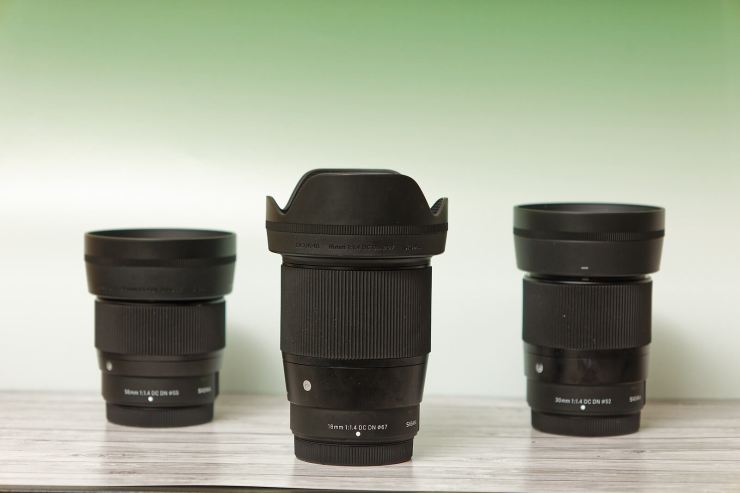
All technical specifications were taken from the B&H product page:
- Aperture Range: f/1.4 to f/16
- Two SLD Elements, Three FLD Elements
- Two Aspherical Elements
- Super Multi-Layer Coating
- Stepping Motor AF System
- Weather-Sealed Construction
- Rounded 9-Blade Diaphragm
Sigma 16mm f/1.4 DC DN — Ergonomics and build quality
.mgl-tiles { display: none; } #mgl-gallery-634ec3e64f03f { margin: -5px; width: calc(100% + 10px); } #mgl-gallery-634ec3e64f03f .mgl-box { padding: 5px; } @media screen and (max-width: 768px) { #mgl-gallery-634ec3e64f03f { margin: -5px; width: calc(100% + 10px); } #mgl-gallery-634ec3e64f03f .mgl-box { padding: 5px; } } @media screen and (max-width: 460px) { #mgl-gallery-634ec3e64f03f { margin: -5px; width: calc(100% + 10px); } #mgl-gallery-634ec3e64f03f .mgl-box { padding: 5px; } }
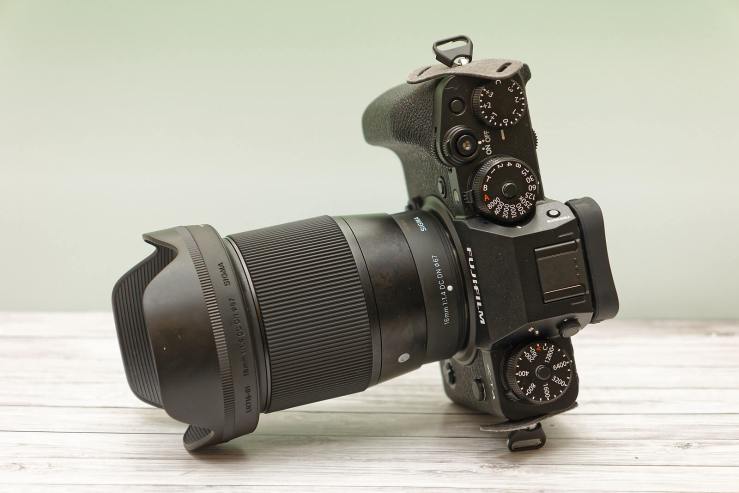
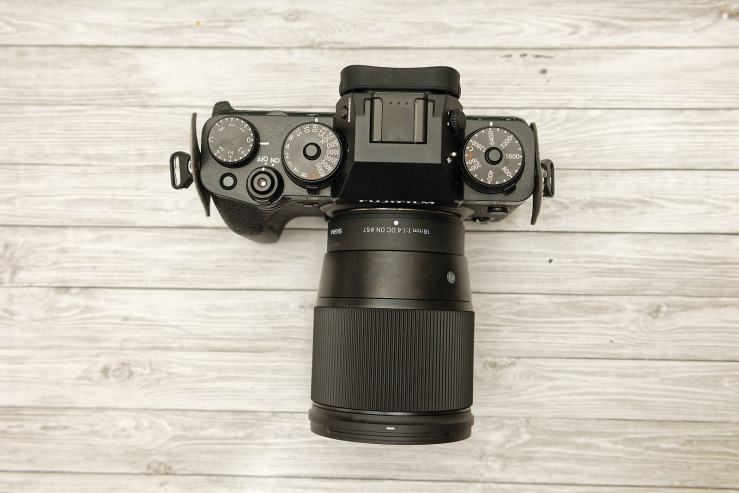
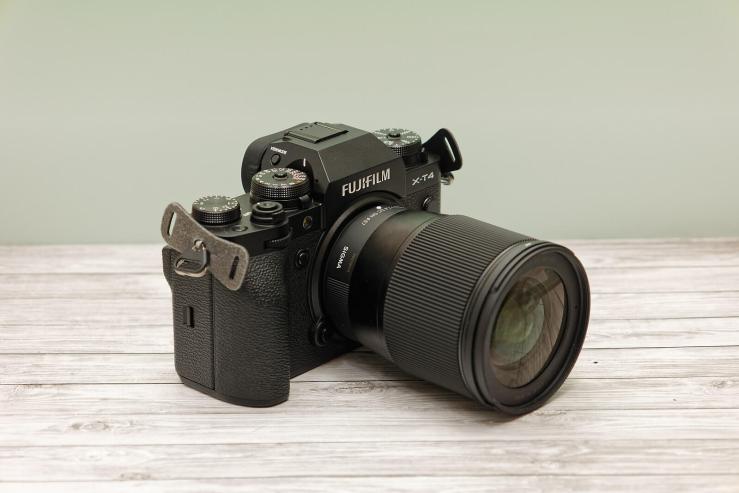
Sigma has built a reputation for good build quality with their tank-like Art and Sport series lenses. While the Contemporary line of lenses misses out on some of the build features of those lenses, they still provide good quality for a lesser price. The Sigma 16mm f/1.4 is made of tough composite material. It features a brass mount with a splash and dust seal included. However, that seems to be where the weather sealing ends.
The focus ring on the Sigma is the only point of control for the lens. It is lightly damped and feels pretty average among the focus-by-wire lenses around today. The 16mm is also the largest of the three Sigma APS-C primes. That said, it’s still easily manageable on the Fuji X-T4 and doesn’t feel overbalanced. Not bad for a wider f/1.4 lens.
Sigma 16mm f/1.4 DC DN — In the field
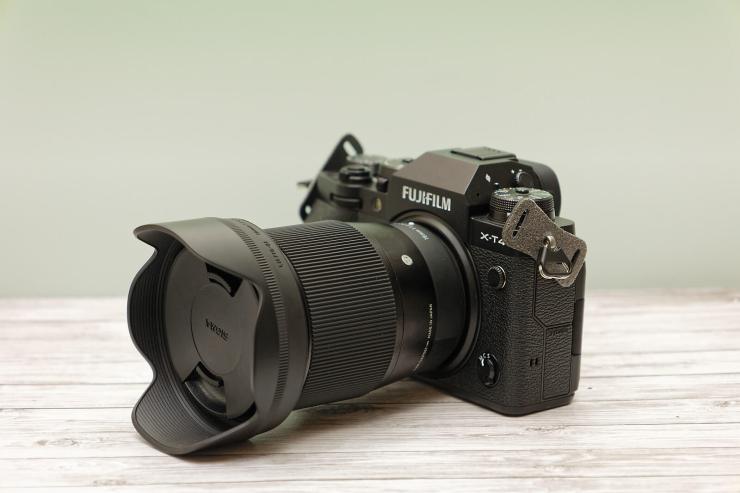
Pairing this lens with an X-T4 made for an excellent photography experience. Even with the Sigma 16mm f/1.4 being the bulkiest of its siblings, it was still small and light enough to carry around without issue. Although, this lens is long enough it could potentially be an issue for X-Pro users who enjoy their OVF experience. This lens was great to use for environmental portraits, some architectural photos, and landscape work as well.
There’s not much to this lens. It’s about as simple as a lens can get. The manual focus ring is the only control on the lens. Switching focus has to be done through the camera body, which is luckily quite easy with Fuji cameras.
Similarly, there is no lens stabilization. However, when paired with a body with IBIS slower shutter speeds are easy to pull off. If you’re using a body without IBIS, the fast f/1.4 max aperture helps to keep those ISO values down and shutter speeds up.
Sigma 16mm f/1.4 DC DN — Autofocus performance
.mgl-tiles { display: none; } #mgl-gallery-634ec3e64fd42 { margin: -5px; width: calc(100% + 10px); } #mgl-gallery-634ec3e64fd42 .mgl-box { padding: 5px; } @media screen and (max-width: 768px) { #mgl-gallery-634ec3e64fd42 { margin: -5px; width: calc(100% + 10px); } #mgl-gallery-634ec3e64fd42 .mgl-box { padding: 5px; } } @media screen and (max-width: 460px) { #mgl-gallery-634ec3e64fd42 { margin: -5px; width: calc(100% + 10px); } #mgl-gallery-634ec3e64fd42 .mgl-box { padding: 5px; } }





The autofocus performance of this lens was great. Using eye/face detection worked perfectly. Tracking worked as well as any native Fuji lens, making for a fun time getting action shots of my friend’s Vizsla dog. The Sigma 16mm f/1.4 was fast and near-silent in its job.
Surprisingly, video autofocus was also quite good. I took this lens on a few mountain bike rides to film some action in order to make a short edit for a friend. I found that the lens inspired confidence on the X-T 4 and allowed me to follow the action while it took care of focus. Note, footage shot with the Sigma 16mm f/1.4 DC DN can be found between 0:08 and 1:17.
Sigma 16mm f/1.4 DC DN — Image Quality
.mgl-tiles { display: none; } #mgl-gallery-634ec3e650fd3 { margin: -5px; width: calc(100% + 10px); } #mgl-gallery-634ec3e650fd3 .mgl-box { padding: 5px; } @media screen and (max-width: 768px) { #mgl-gallery-634ec3e650fd3 { margin: -5px; width: calc(100% + 10px); } #mgl-gallery-634ec3e650fd3 .mgl-box { padding: 5px; } } @media screen and (max-width: 460px) { #mgl-gallery-634ec3e650fd3 { margin: -5px; width: calc(100% + 10px); } #mgl-gallery-634ec3e650fd3 .mgl-box { padding: 5px; } }





Sigma really delivered the image quality with this lens. The optical performance of the Sigma 16mm f/1.4 DC DN is phenomenal. Sharpness is great, distortion and aberrations are very well controlled, and the images have great color and contrast. Here’s how it performed in finer detail.
Distortion control and vignetting


Sigma really got a handle on distortion and vignetting with the 16mm. Left is a photo with distortion and vignetting corrections turned off, to the right is with both turned on in DxO Photolab 5. As you can tell, there is very minimal vignetting and distortion going on with this lens. From an affordable 16mm f/1.4 lens, I was quite impressed to see this level of performance.
Ghosting, flaring, and chromatic aberration
.mgl-tiles { display: none; } #mgl-gallery-634ec3e652345 { margin: -5px; width: calc(100% + 10px); } #mgl-gallery-634ec3e652345 .mgl-box { padding: 5px; } @media screen and (max-width: 768px) { #mgl-gallery-634ec3e652345 { margin: -5px; width: calc(100% + 10px); } #mgl-gallery-634ec3e652345 .mgl-box { padding: 5px; } } @media screen and (max-width: 460px) { #mgl-gallery-634ec3e652345 { margin: -5px; width: calc(100% + 10px); } #mgl-gallery-634ec3e652345 .mgl-box { padding: 5px; } }




The Sigma 16mm f/1.4 handles being pointed into the sun with aplomb. I tried shooting toward the sun over the course of a few hours at different angles and never had issues with flaring or ghosting. It also seems like chromatic aberrations are well controlled. It does have some longitudinal chromatic aberration, where out-of-focus elements can show purple and/or green fringing. However, that was minor and not often noticeable.
As an aside, the lens also produces a pretty nice Sunstar. When stopped down to f/16, it gives nice defined points and stays sharp enough to be usable. A nice and fun trait to have with a wider lens, even if it is a bit niche.
Sharpness
.mgl-tiles { display: none; } #mgl-gallery-634ec3e653231 { margin: -5px; width: calc(100% + 10px); } #mgl-gallery-634ec3e653231 .mgl-box { padding: 5px; } @media screen and (max-width: 768px) { #mgl-gallery-634ec3e653231 { margin: -5px; width: calc(100% + 10px); } #mgl-gallery-634ec3e653231 .mgl-box { padding: 5px; } } @media screen and (max-width: 460px) { #mgl-gallery-634ec3e653231 { margin: -5px; width: calc(100% + 10px); } #mgl-gallery-634ec3e653231 .mgl-box { padding: 5px; } }



While these small web-optimized images aren’t the best at showing detail, hopefully, you can tell that sharpness isn’t a problem. The Sigma 16mm f/1.4 DC DN is no slouch here. This lens has plenty of resolving power for the Fuji X-T4’s 26-megapixel sensor. From fine details in landscape shots to crisp and clean architectural photos, this Sigma won’t let you down.
Bokeh
.mgl-tiles { display: none; } #mgl-gallery-634ec3e653d7a { margin: -5px; width: calc(100% + 10px); } #mgl-gallery-634ec3e653d7a .mgl-box { padding: 5px; } @media screen and (max-width: 768px) { #mgl-gallery-634ec3e653d7a { margin: -5px; width: calc(100% + 10px); } #mgl-gallery-634ec3e653d7a .mgl-box { padding: 5px; } } @media screen and (max-width: 460px) { #mgl-gallery-634ec3e653d7a { margin: -5px; width: calc(100% + 10px); } #mgl-gallery-634ec3e653d7a .mgl-box { padding: 5px; } }




While 16mm isn’t the first focal length you’ll go to for nice bokeh, the Sigma 16mm f/1.4 holds out rather well. With its fast f/1.4 max aperture, it’s able to get some nice out-of-focus backgrounds.
I found it to be maybe a touch busy, but not abnormally so for a lens this wide. As usual, bokeh is rather subjective, but I quite enjoyed this lens for environmental portraits and wide close-ups of my friend’s pup.
Color rendition
.mgl-tiles { display: none; } #mgl-gallery-634ec3e65501f { margin: -5px; width: calc(100% + 10px); } #mgl-gallery-634ec3e65501f .mgl-box { padding: 5px; } @media screen and (max-width: 768px) { #mgl-gallery-634ec3e65501f { margin: -5px; width: calc(100% + 10px); } #mgl-gallery-634ec3e65501f .mgl-box { padding: 5px; } } @media screen and (max-width: 460px) { #mgl-gallery-634ec3e65501f { margin: -5px; width: calc(100% + 10px); } #mgl-gallery-634ec3e65501f .mgl-box { padding: 5px; } }



Color isn’t a problem with this lens. The Sigma 16mm f/1.4 DC DN renders a nice, neutral image. I found no issues with white balance at all when using it. It also produces that lovely contrast that I have come to enjoy so much from Sigma’s Art series lenses.
Now that this lens is on X-mount, it pairs wonderfully with Fuji’s excellent film simulations. All the images in this review are RAWs edited with Fuji’s “Classic Chrome” profile. Other than applying that profile, no color changes were made.
Sigma 16mm f/1.4 DC DN — A worthwhile addition to Fujifilm X-mount

It’s great seeing Sigma finally get involved with the biggest APS-C dedicated lens mount around. While these lenses have been around for other cameras for a while, they still hold up quite well. The Sigma 16mm f/1.4 does offer a nice compromise between the two Fuji 16mm models.
Fuji’s f/2.8 model is less expensive and fully weather-sealed. Their 16mm f/1.4 is also fully sealed, but costs nearly twice as much as the Sigma. With the Sigma sitting at $449 currently, it’s a nice middle ground. Not quite as rugged as the Fuji offerings, but offering the faster f/1.4 aperture at a price closer to the f/2.8. It’s performance isn’t one to shake a stick at, either.
If you can overlook the lens not being fully weather-resistant and not having an aperture ring, it’s certainly worth taking into consideration. Hopefully, we’ll see Sigma bring more of their lenses to X-mount soon. Can we get those f/1.8 zooms to Fuji, Sigma?
Tell your story with the second annual Visual Storytelling Conference!
Experience four days of interactive, online training sessions featuring a range of educational content with experienced photographers and content creators. This free event kicks off with a series of technical boot camps to build essential skills, followed by live, online sessions on photography, video, business and social media. Join live from March 10-13, 2022!
